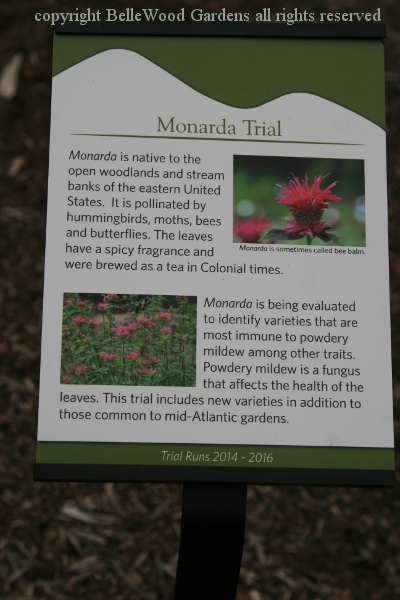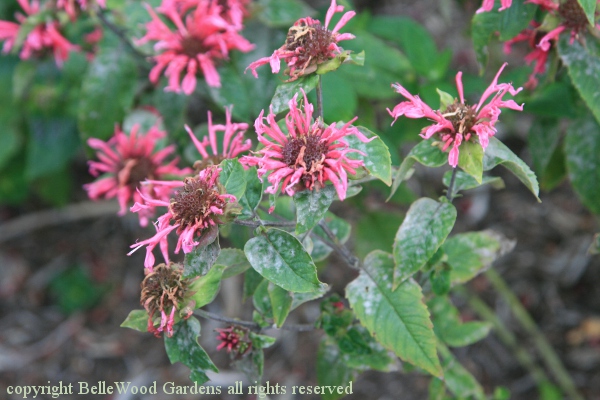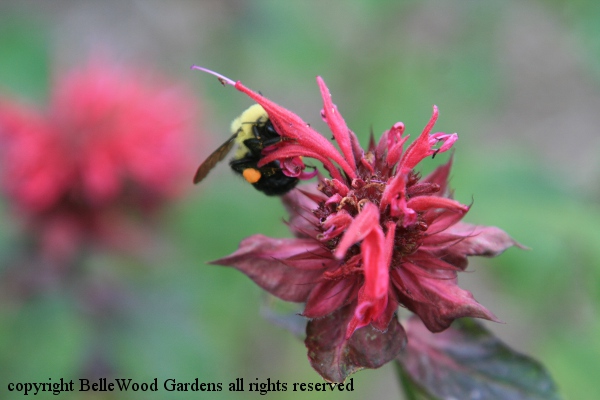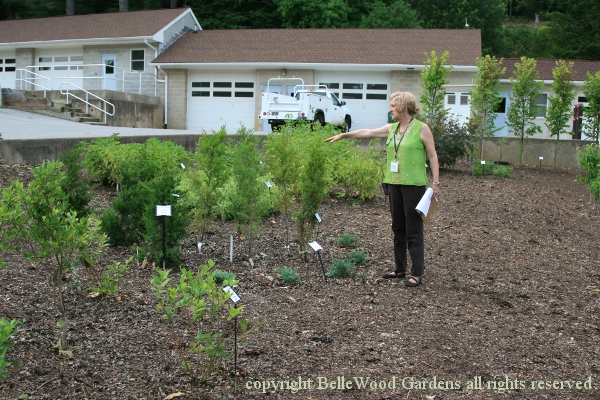
.
If you have any comments, observations, or questions about what you read here, remember you can always Contact Me
All content included on this site such as text, graphics and images is protected by U.S and international copyright law.
The compilation of all content on this site is the exclusive property of the site copyright holder.
You have a garden. You choose plants for your garden. How do you select them? They're prettier / disease resistant / more productive / different from the wild species in one regard or another. That's your choice. But what do these choices mean for the web of life that is also part and parcel of your garden. It is fairly obvious that if we choose double flowered plants - where the sexual parts have altered to petaloid form - that there will be less / no pollen and nectar for bees and butterflies. But what about leaves with a color other than green, or variegated? If the tree or shrub has an altered form - fastigiate, weeping, prostrate - does this make a difference to the insects, birds, and animals that might otherwise make use of it? Simply put - how do these choices that we make, often based on aesthetic parameters, influence the carrying capacity of the land on which we garden.
Mt. Cuba and the Unniversity of Delaware are going to find out, with a two year research program. The question: Do cultivars of native plants support food webs as well as their parent species?

An attentive audience to the preview for this project listens to the explanation and parameters for the research study.

This is a very different matter than the horticultural studies usually conducted by Mt. Cuba.
Previous studies have examined cultivars of coreopsis, baptisia, echinacea, heuchera.
This year the horticultural study 's focus is on Monarda, commonly known as beebalm.

It is mildew that's the biggest problem for this outherwise vigorous plnt.
(Wouldn't want to brew tea from these leaves, now would you!)

Monarda is popular with bees, and also hummingbirds, especially the red flowered forms.

In addition to Monarda didyma, the source of popular garden cultivars
there are other species, such as Monarda punctata. Flowers perhaps
less showy, but foliage also apparently less subject to disease.
I digress, but as you'll learn - only a little. Back to the ecological study.

Here's Eileen Boyle, director of education and research,
pointing at a group of the study plants.

Parameters are: change of plant habit (compact or upright); enhanced disease resistance;
increased fruiting; enhanced for fall color; change green leaf to variegated leaf;
and change green leaf to dark / purple leaf. The three cultivars for the latter study
are Juniperus virginiana 'Corcorcor', Viburnum dentatum 'J.N. Select'

and Rhus copallina 'Lanham's Purple'. Insect herbivores
will be collected from the parent species, then comparing their
diversity and abundance with the insects collected on the cultivars.

There are many insects that are potential visitors: bees, wasps, and more.

Up in the horticultural trials area some coreopsis are caged.
Why do this? There are multiple reasons that make this a fascinating and functionally important study: biodiversity of native insect pollinators is decreasing worldwide. Honey bee populations are dropping, every year. Stability of agricultural systems and overall reduction in ecosystem function is threatened by reduction in pollinator communities. Pests, parasites, viruses, intesified land use all result in reductions of pollinator communities. Further, there is a lack of current information regarding the availability of pollinator forage and its nutritional quality.
As part of the study, the project will develop a digital pollen library of Mid-Atlantic flowering plants and different cultivars of indigenous species. There will be analysis of nutritional quality of pollen and nectar (specifically pollen from Coreopsis species and cultivars, and nectar from Monarda species and cultivars.)
The long term goals are to correlate nutritional data with insect attraction data; correlate honey bee colony health with availability of floral resources.
What's in it for me and you? The study will provide homeowners, landscape designers, and nursery managers with reccommendations on plants that will add aesthetic value to their properties while increasing nutritional value for pollinators, thus providing an ecologically valuable service. After all: You are what you eat, or in university speak - determining the ecological role of flowering plants as nutritionl forage for pollinators.
Project information provided by Mt. Cuba Center and University of Delaware
Back to Top
Back to July 2014